The Nankeen kestrel (Falco cenchroides), also known as the Australian kestrel, is a raptor native to Australia and New Guinea.
Its common descriptor refers to the colour of nankeen cloth, originally a yellowish chestnut cotton from Nankeen or Nanking (modern Nanjing), China, used for making cotton trousers.
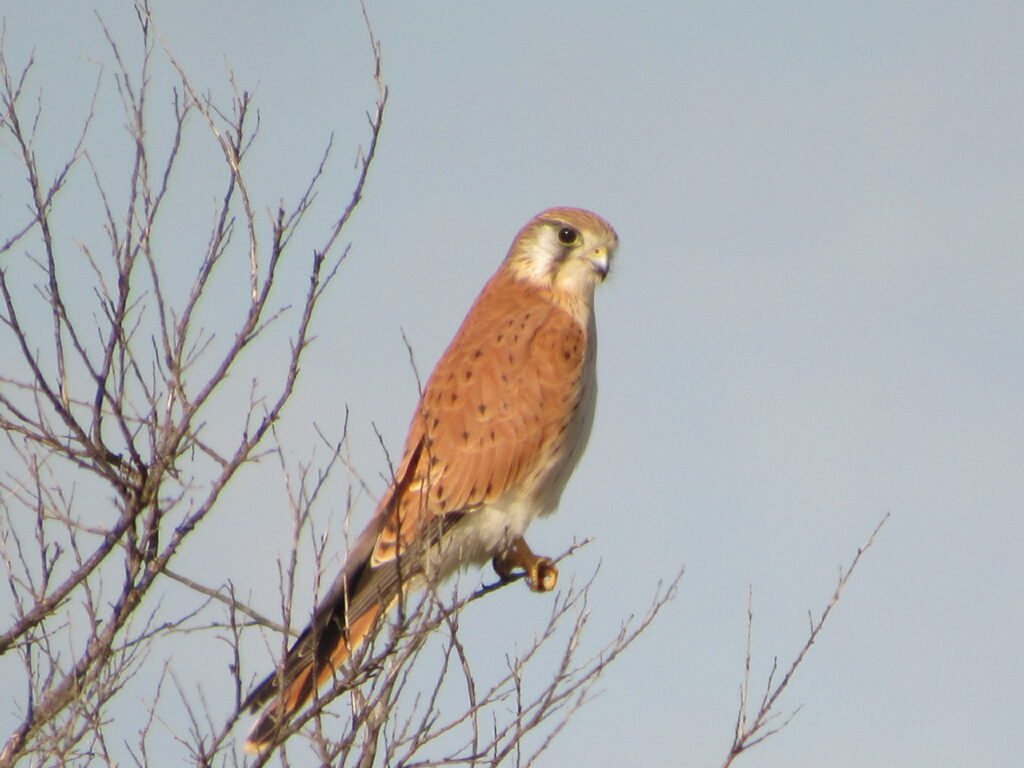
It is one of the smallest falcons. This small, slim falcon measures 28 to 35 cm long with a wingspan of 66 to 78 cm. It may be small but, in a previous extensive nationwide survey, it is placed amongst the top ten of “the most seen birds in the whole of Australia.” It was recorded in 95% of the survey sites located across the whole of Australia.
The Nankeen Kestrel’s success as a bird of prey can be largely due to its tolerance for a wide variety of habitats, foods, and nesting sites.
Appearances
The upper parts are mostly golden brown, with some black spearhead markings at the subterminal ends of the secondary covert (greater, median, and lesser) feathers and some of the innermost secondary flight feathers. The primary flight and covert feathers are black. (Images 1,2,3 and4)

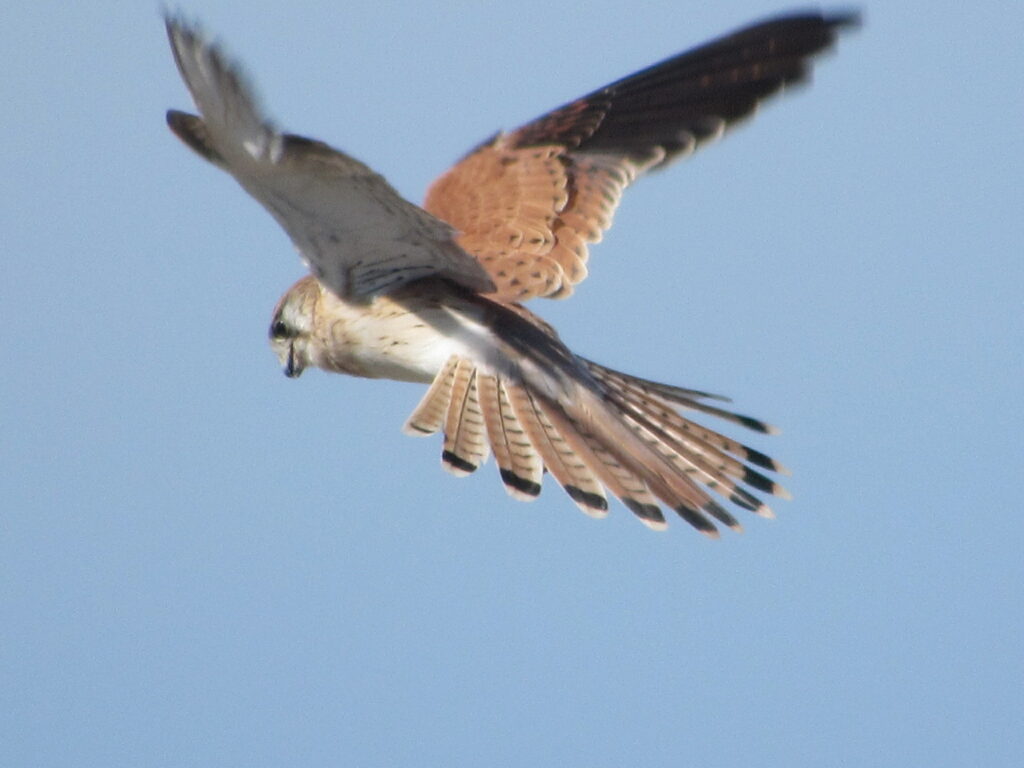
The crown and nape are the same golden-brown colour. The monotonous colour of the crown is broken by a flood of short strands of darker brown. The side of the face (cheek, malar region and lores) and neck are whitish in colour, except for a light black tear-streak spreading downwards from the anterior half of the black eye. There is also a similar black streak spreading posteriorly from the eye (Image 1).



Males have a greyish crown and tail (plain greyish, no tiger-tail pattern, only a subterminal black band). It also has lesser and lighter marking on the covert feathers. Females are larger than males. Young Nankeen Kestrels closely resemble the adult female, with heavier markings. The female and juvenile have a pale rufous crown and finely barred rufous tail. The tail is long and has a subterminal black band. Click below link for a picture of male plumage.
https://www.friendsofqueensparkbushland.org.au/australian-kestrel/
The underparts are pure white, and streaked with thin black strands over the upper breast and flank regions. Over these areas of black strands, the underlying fine white feathers have usually changed to a light brown colour.

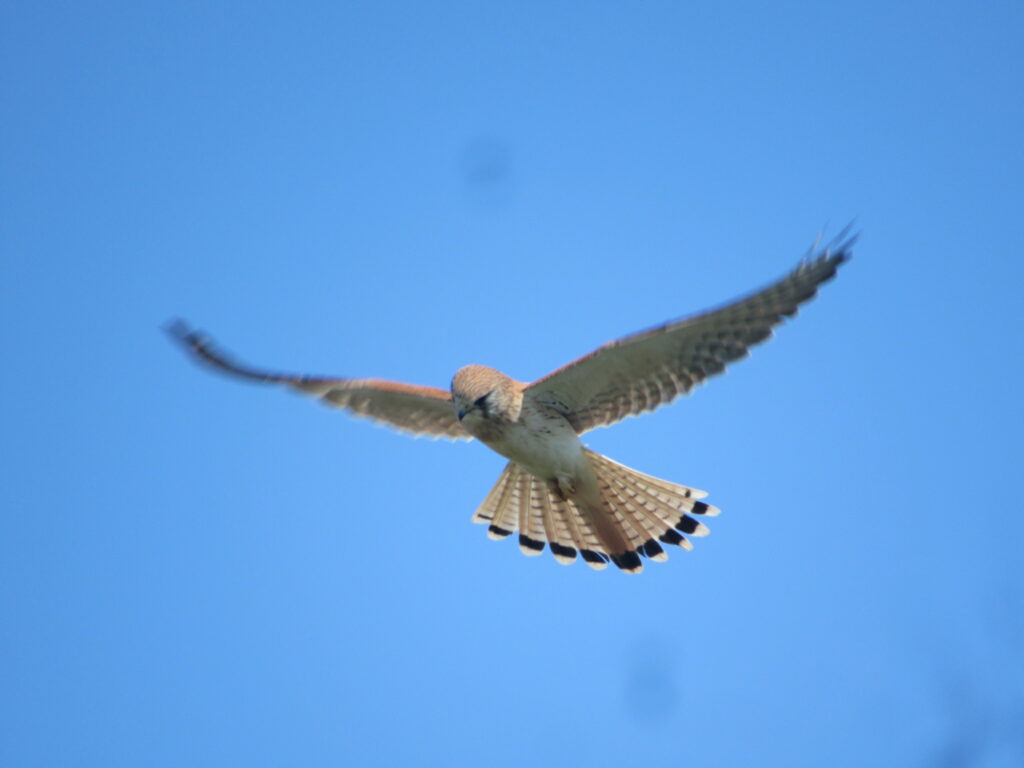
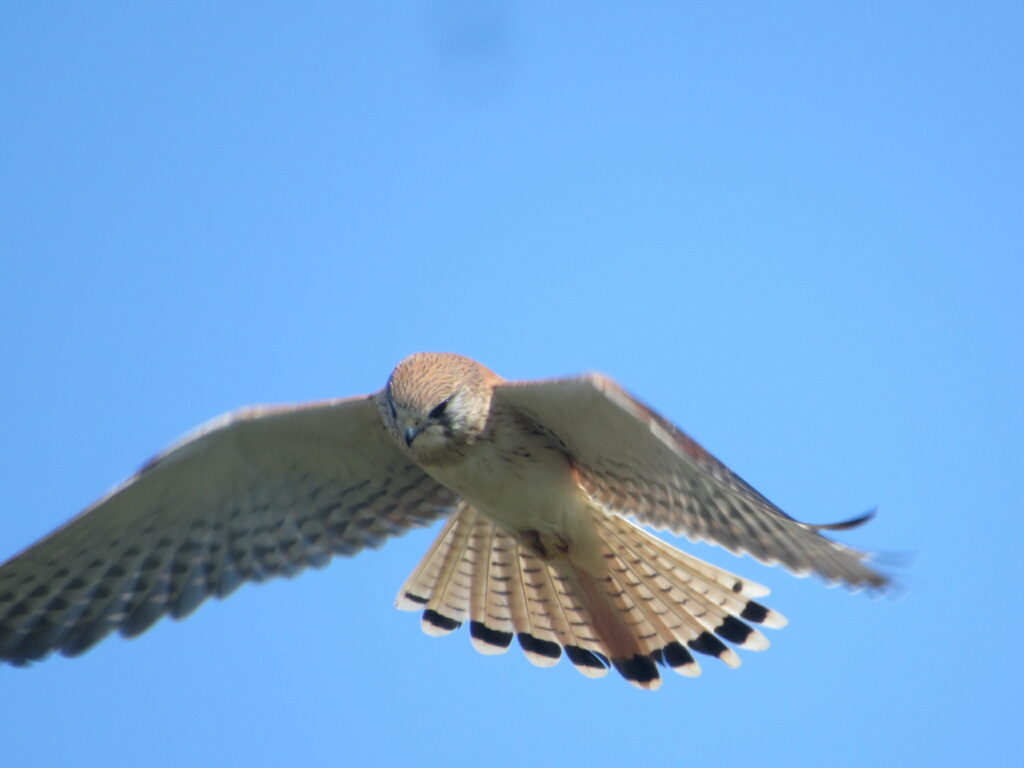
The white underwing is broken by the black tips of the primary flight feathers. There are also 5-6 interrupted brownish bars in the posterior half of the wings, parallel to the trailing edge.
The small, strong beak is ivory in colour with a black tip. The upper mandible curves downwards into a very sharp, wicked-looking point. The ceres, the narrow eye rings and legs are yellow in colour.
Eyes
Goblet cells from the eyelids produce mucus that enables the tears to stick to the eyeball surface. This prevents the eyes from drying out as the bird flies through wind. Its eyes are also protected by the third eyelid, “the transparent nictating membrane”, from any aerial flying missiles.
Food
The Nankeen Kestrel’s diet is varied. It mainly feeds on small mammals (like mice), reptiles (like skinks and small snakes), small birds and a variety of insects.
Behaviour and ecology
Kestrels like to hunt from a high perch (bared branch of a tall tree or a telephone/utility pole) using a glide attack. Another common hunting tactic is quartering flights which are interspersed with motionless hovering. The predator searches for prey by hovering in the open sky, at a low height above the wide grasslands, shrublands and farmlands (sky perch hunting),

The light brown coloured tail is finely barred. There is a subterminal black band. The two central feathers are uniformly brown and have no bar pattern (Image 10). On either side are 5 feathers, with the main rachis (feather shaft) dividing each feather asymmetrically into a medial (inner) 2/3 and a lateral (outer) 1/3. Onto the medial side are found 7 to 8 fine, dark brown lines, perpendicular to the rachis. The lateral side is uniformly coloured. This gives it a beautiful tiger-tail appearance, especially when folded. However, the above is not found in all birds, as some birds possess bars on both halves of the tail feather.
Beak
Beak consists of two bony projections – the upper and lower mandibles – which are covered with a thin keratinized layer of epidermis known as the rhamphotheca. In most species, two holes called nares lead to the respiratory system. The tomia (singular tomium) are the cutting edges of the two mandibles. Most falcons have a sharp projection along the upper mandible, with a corresponding notch on the lower mandible. They use this “tooth” to sever their prey’s vertebrae or to rip insects apart. The tomial teeth of falcons are underlain by bone, while the shrike tomial teeth are entirely keratinous.
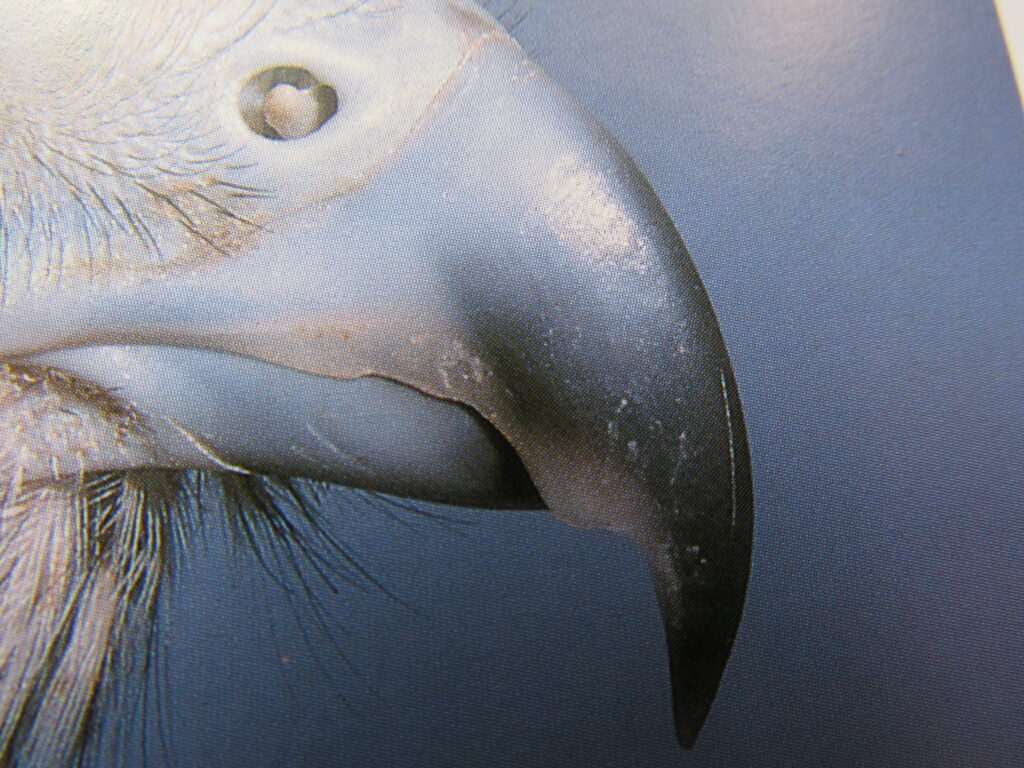
In most falcons, the nares house a most curious bony cone structure called the tubercle, of unknown function. There is speculation that it is similar in design and function to the inlet cone of a jet engine. During the high speed dive (up to 200 miles per hour or 320 km per hour) of some falcons, the cones help to reduce the high air pressure, enabling the falcon to breathe and to prevent damage to the fragile lung alveoli.
Breeding

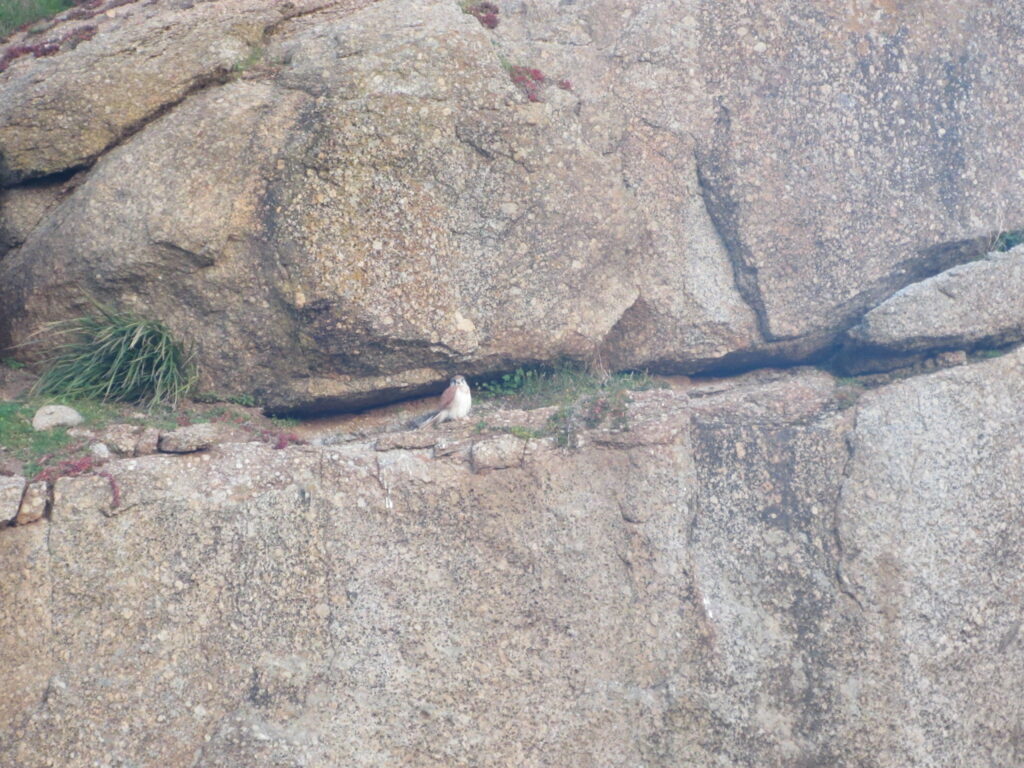
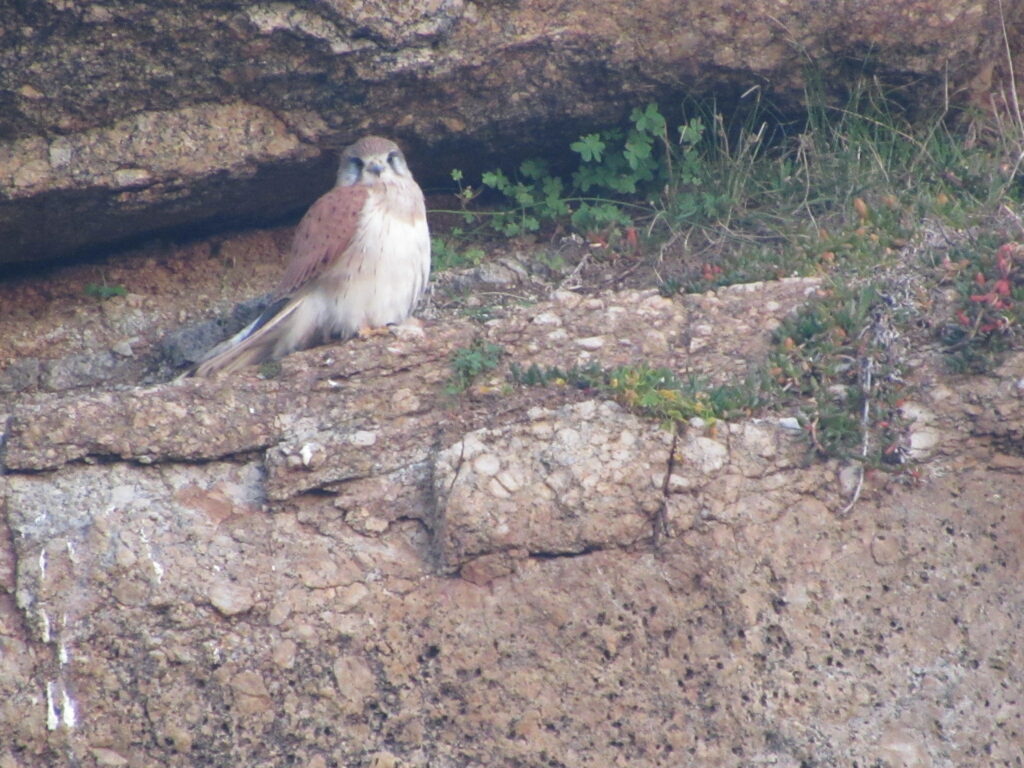
Kestrel nests in a wide variety of sites: tree hollows, cliff ledges and cavities in a steep cliff, on the outside of buildings, occasionally on the ground or an abandoned birds’ nests. The kestrels occupy the nests as they are without embellishing them for comfort or aesthetics. Pairs of Nankeen Kestrels are usually monogamous over successive breeding seasons, and will often use the same nest site or territory year after year. Usually only one brood of young is raised in a year.
Three to five eggs are laid in late winter (usually about four) and incubated by the female alone. Eggs are tapered-oval in shape, light-brown in colour with speckles of darker brown, black or red. Hatching takes place after 26 to 28 days, and the male brings food while the female continues to incubate until the young are close to fledging, at which time the female joins the male to hunt for the demanding youngsters. Nesting period is usually 28 to 31 days. More than one brood are raised in good seasons.
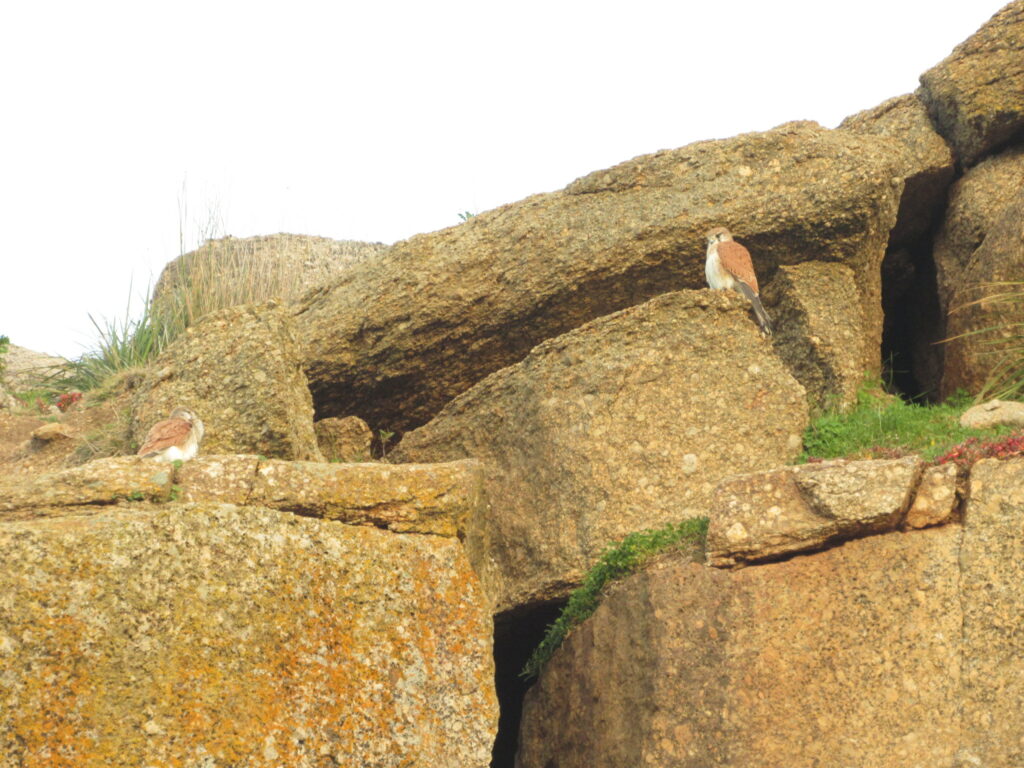
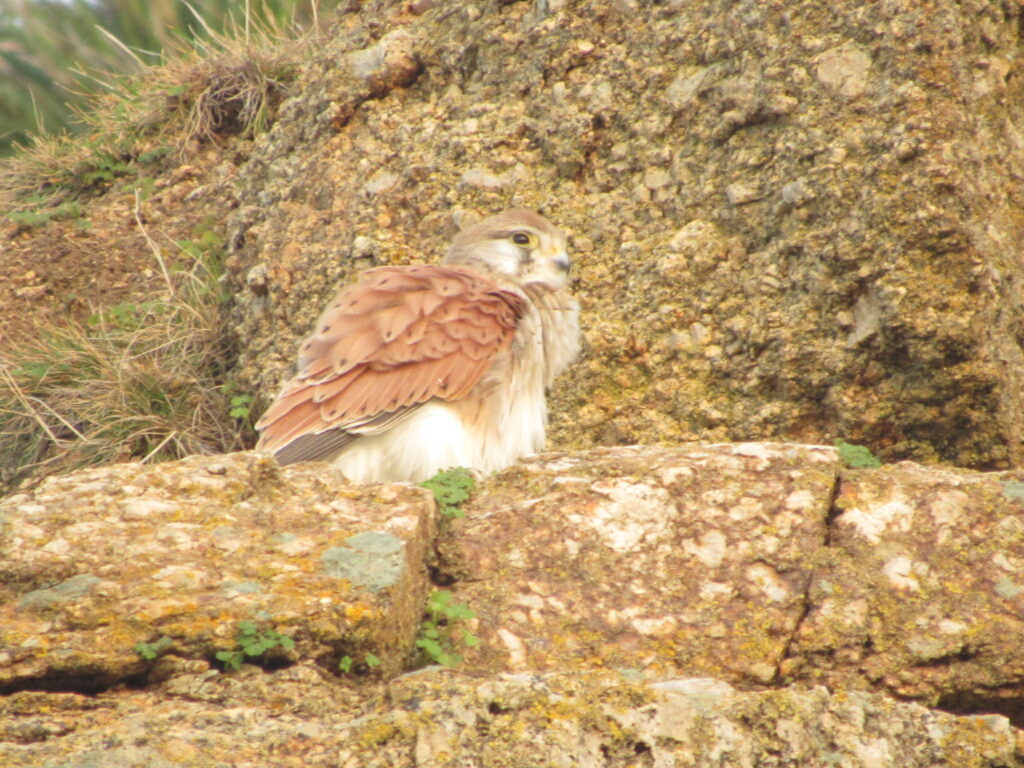
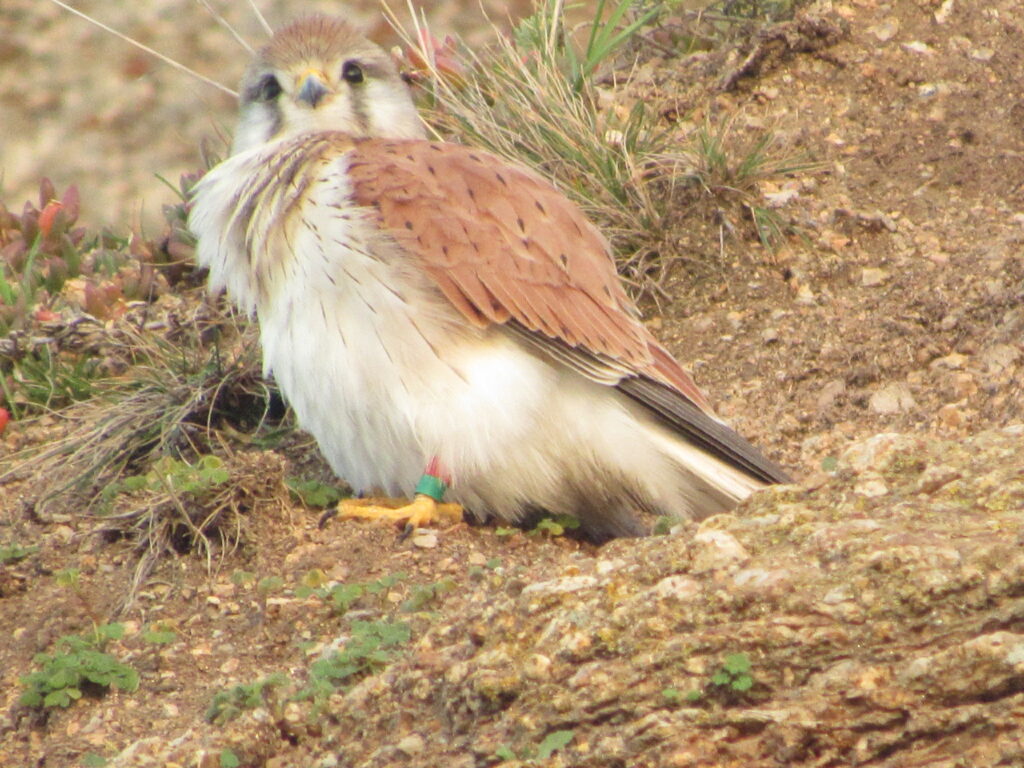
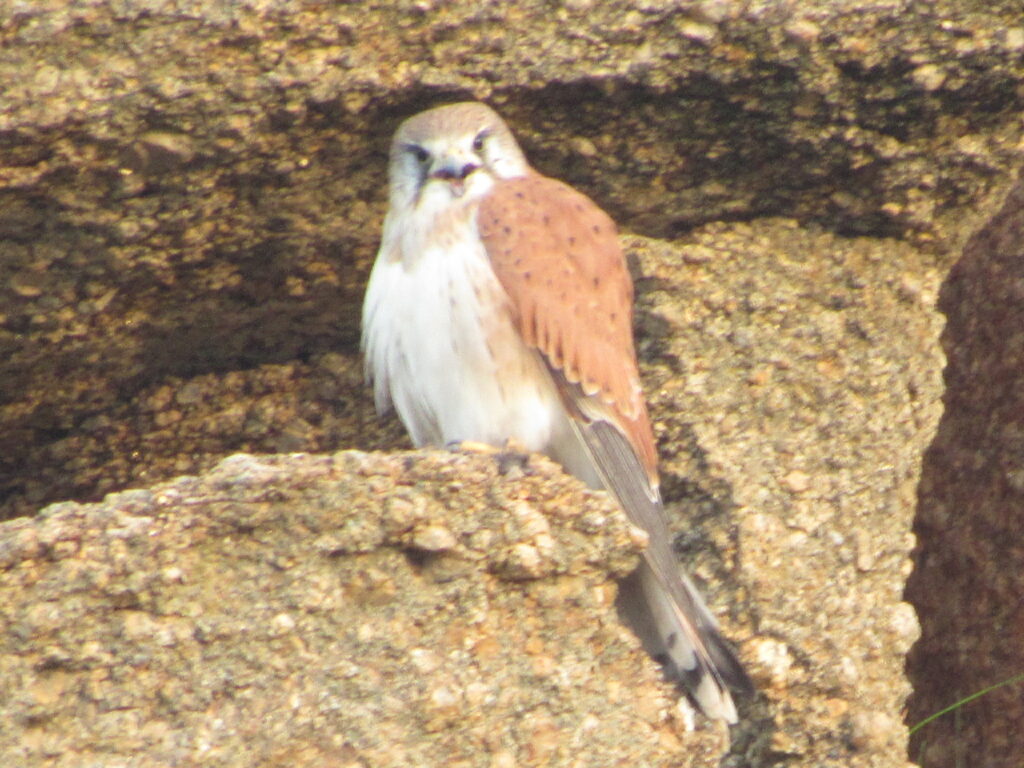
Communications
Voice: a high-pitched chattering kee-kee-kee call usually uttered during the breeding season.
Variations in volume and frequencies of the basic sound, may have different meanings. Below are two websites with good samples of sound recordings.
https://ebird.org/species/auskes1
https://mdahlem.net/birds/6/nankest.php
References
2. https://australian.museum/learn/animals/birds/nankeen-kestrel-falco-cenchroides/
3. https://ebird.org/species/auskes1
4. https://www.birdsoutsidemywindow.org/2009/12/26/anatomy-cere-and-nares/
5. https://nzbirdsonline.org.nz/species/nankeen-kestrel
6. Handbook of the Birds of the World. Vol.2: Family Falconidae
All photos and videos copyrighted to Wong Kais, unless otherwise stated.







